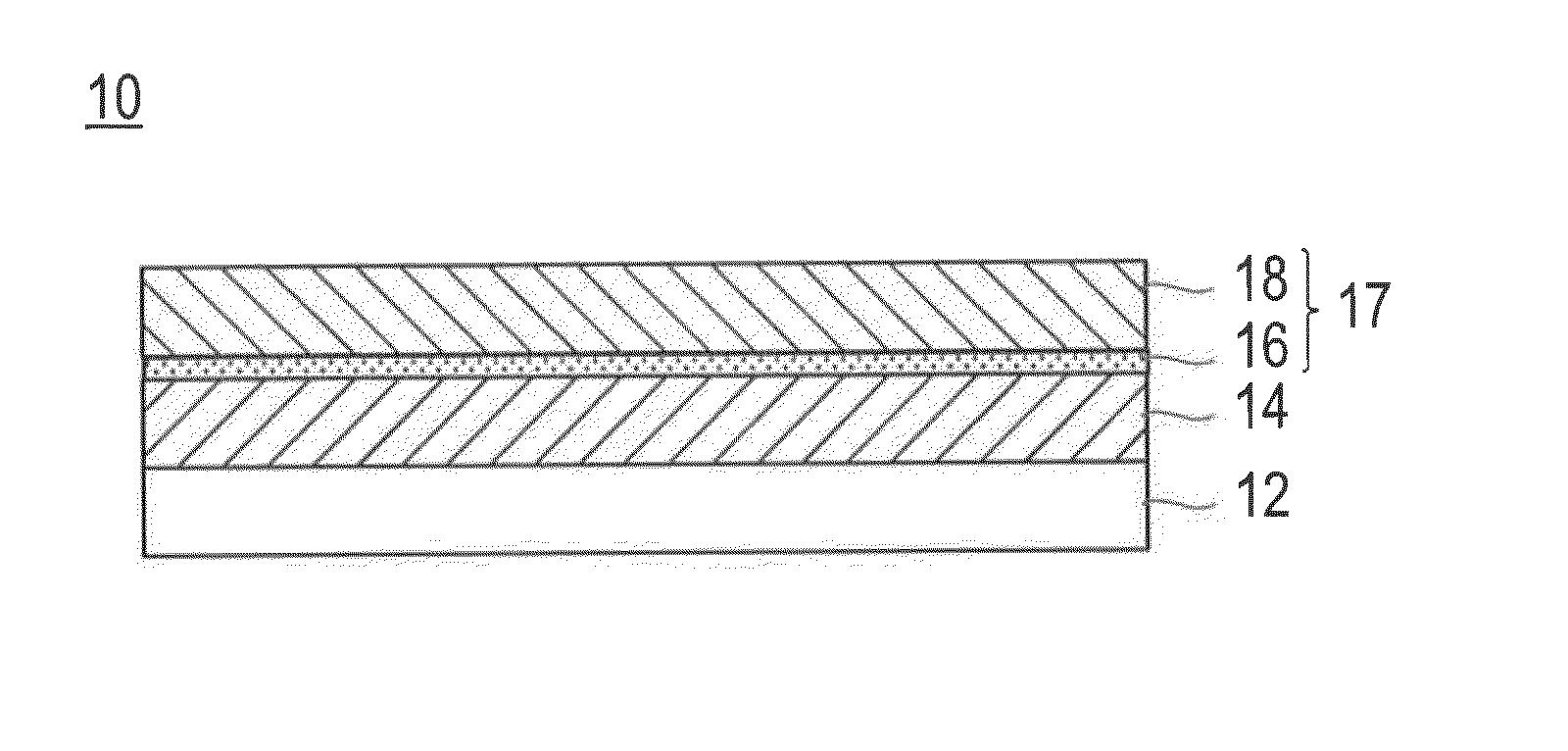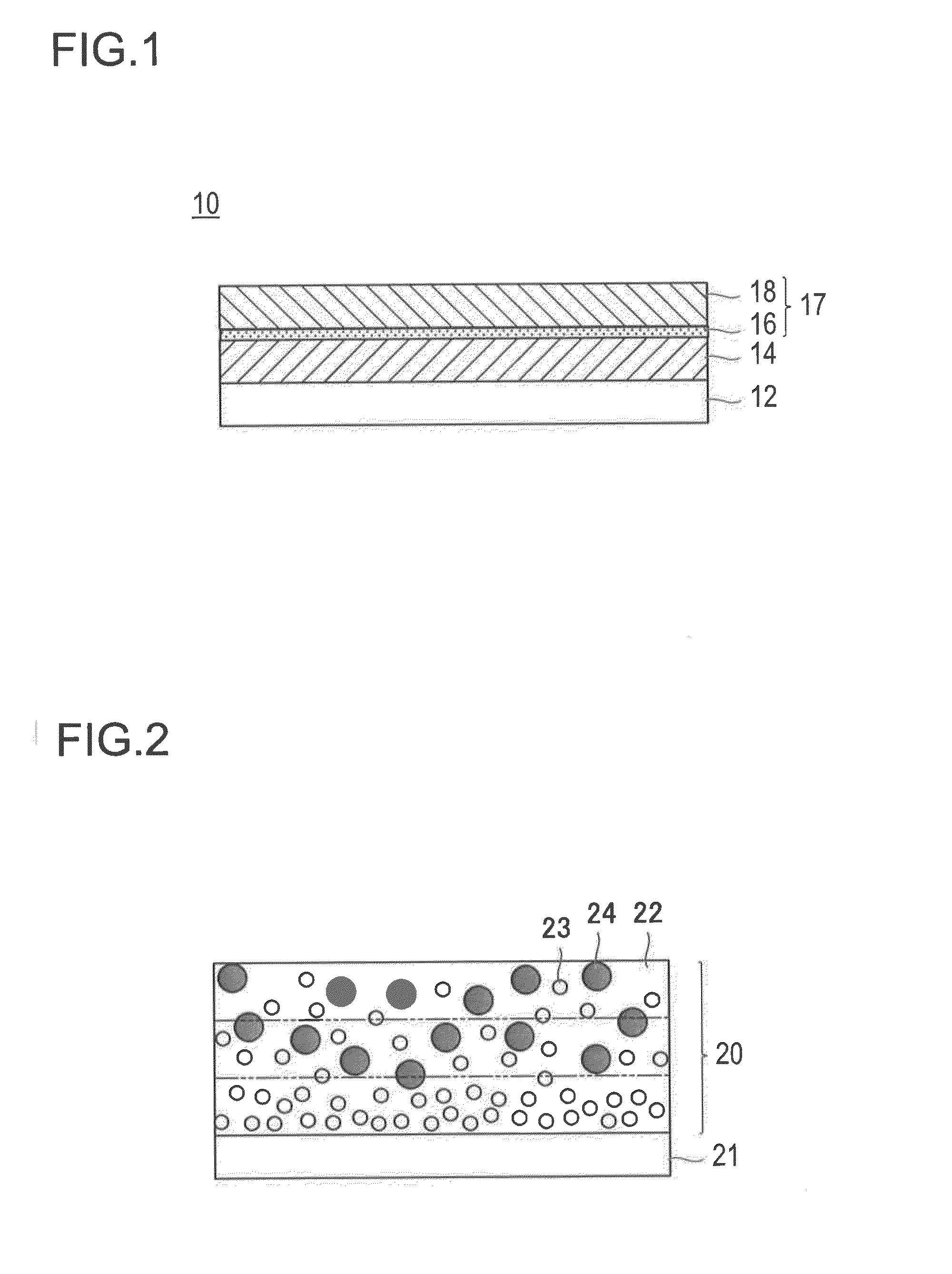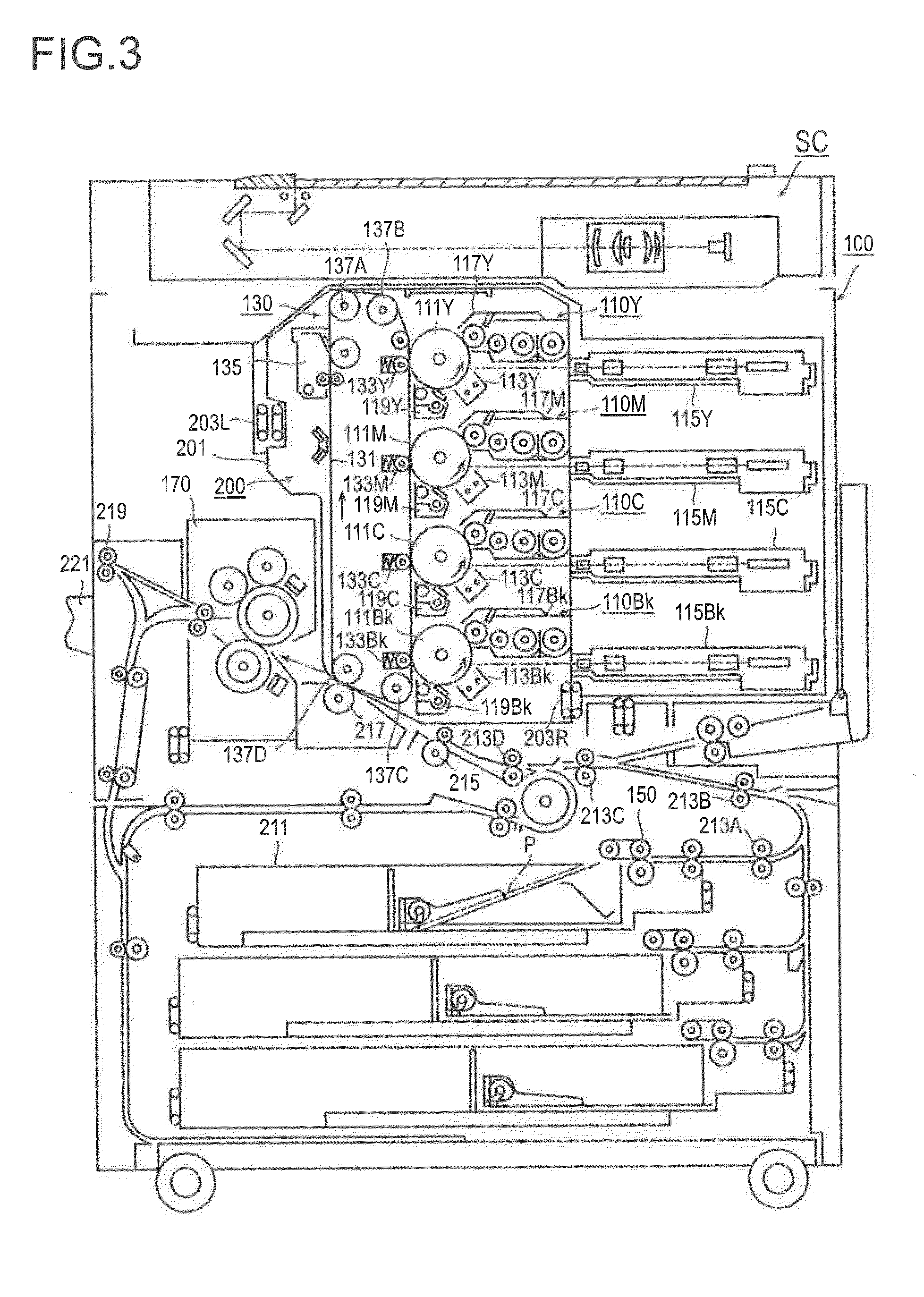Electrophotographic photoreceptor
a photoreceptor and electron-transporting technology, applied in the field of electron-transporting photoreceptors, can solve the problems of insufficient hole blocking properties, inability to achieve sufficient hole blocking properties, and inability to suppress positive holes in the photosensitive layer from the conductive support, etc., to achieve enhanced electron-transporting properties, suppress image defects such as black spots and fog, and enhance electron-transporting properties
- Summary
- Abstract
- Description
- Claims
- Application Information
AI Technical Summary
Benefits of technology
Problems solved by technology
Method used
Image
Examples
example 1
Photoreceptor 1
[0177]“Photoreceptor 1” having a laminate structure obtained by forming successively an intermediate layer, a charge generating layer, and a charge transport layer on a conductive support was produced by the following procedure.
[0178]
[0179]A tube made of aluminum alloy of a length of 362 mm was attached to an NC lathe and subjected to cutting processing so that the outer diameter was 59.95 mm and Rzjis of the surface was 1.2 μm by a sintered diamond bite.
[0180]
[0181](Formation of Intermediate Layer)
[0182]100 parts by mass of the following polyamide resin (N-1) as a binder resin was added to 1850 parts by mass of a mixed solvent of ethanol / n-propyl alcohol / tetrahydrofuran (volume ratio: 50 / 20 / 30) and stirred and mixed at 20° C. 130 parts by mass of the surface-treated metal oxide particles 6 as the first metal oxide particles and 150 parts by mass of the surface-treated metal oxide particles 1 as the second metal oxide particles were added to the solution and dispersed...
examples 2 to 7
Photoreceptors 2 to 7
[0200]
[0201]An electrophotographic photoreceptor was produced in the same manner as Example 1, except that the surface-treated metal oxide particles contained in the intermediate layer of the photoreceptor 1 were changed as in the following Table 2-1.
example 8
Photoreceptor 8
[0202]
[0203]The photoreceptor 8 was produced in the same manner as the Example 2, except that the coating liquid for charge generating layer in the photoreceptor 2 was changed as follows.
[0204](Coating Liquid for Charge Generating Layer)
[0205]The following components were mixed and dispersed for 15 hours using a sand mill disperser, and, thus, to prepare the coating liquid for charge generating layer. The coating liquid was coated on an intermediate layer by dip coating, and a “charge generating layer” having a dried film thickness of 0.5 μm was formed.
Y-type phthalocyanine (a titanyl phthalocyanine20parts by masspigment exhibiting a maximum diffraction peak ata Bragg angle of (2θ± 0.2°)27.3° inan X-ray diffraction spectrum using Cu-Kαcharacteristic X-ray)Polyvinyl butyral (BM-1 produced by Sekisui10parts by massChemical Co., Ltd.)Methyl ethyl ketone700parts by massCyclohexanone300parts by mass
PUM
| Property | Measurement | Unit |
|---|---|---|
| number average primary particle sizes | aaaaa | aaaaa |
| number average primary particle sizes | aaaaa | aaaaa |
| thickness | aaaaa | aaaaa |
Abstract
Description
Claims
Application Information
 Login to View More
Login to View More - R&D
- Intellectual Property
- Life Sciences
- Materials
- Tech Scout
- Unparalleled Data Quality
- Higher Quality Content
- 60% Fewer Hallucinations
Browse by: Latest US Patents, China's latest patents, Technical Efficacy Thesaurus, Application Domain, Technology Topic, Popular Technical Reports.
© 2025 PatSnap. All rights reserved.Legal|Privacy policy|Modern Slavery Act Transparency Statement|Sitemap|About US| Contact US: help@patsnap.com



